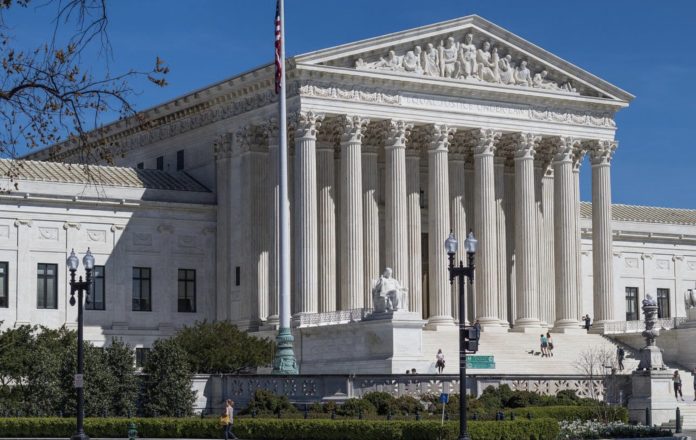OPINION | This article contains commentary that reflects the author's opinion.
A landmark 6-3 ruling by the Supreme Court is a major victory for lawful gun owners and the Second Amendment.
The high court ruled that New York’s regulations against concealed carry handguns were unconstitutional and overly restrictive.
Leftists in New York required Americans to show “proper cause” for obtaining a concealed carry license. This allowed liberals to use their “discretion in determining whether a person has shown a good enough reason for needing to carry a firearm.”
If you simply wished to “protect yourself or your property,” this was not a good enough reason for liberal lawmakers in New York.
This effectively prevented many Americans from receiving a concealed carry license in New York.
Justice Clarence Thomas wrote in the Court’s opinion: “In this case, petitioners and respondents agree that ordinary, law-abiding citizens have a similar right to carry handguns publicly for their self-defense. We too agree, and now hold, consistent with Heller and McDonald, that the Second and Fourteenth Amendments protect an individual’s right to carry a handgun for self-defense outside the home.”
“Because the State of New York issues public-carry licenses only when an applicant demonstrates a special need for self-defense, we conclude that the State’s licensing regime violates the Constitution,” Thomas added.
This case was the first major gun rights case before the Supreme Court in more than a decade.
In his opinion, Thomas referenced 2010’s McDonald v. City of Chicago and D.C. v. Heller in his reasoning.
“As we stated in Heller and repeated in McDonald, ‘individual self-defense is ‘the central component’ of the Second Amendment right,’” Thomas explained.
“[W]e do think respondents err in their attempt to characterize New York’s proper-cause requirement as a ‘sensitive-place’ law,” Thomas wrote, adding that New York viewed “sensitive places” as anywhere “where people typically congregate and where law-enforcement and other public-safety professionals are presumptively available.”
Thomas said this definition is too broad.
“Put simply, there is no historical basis for New York to effectively declare the island of Manhattan a “sensitive place” simply because it is crowded and protected generally by the New York City Police Department,” he added.
More on this story via Fox News:
Thomas noted that the state statute does not define what “proper cause” means, and that courts had ruled that the standard was met by people who showed a “special need for self-protection.”
“This ‘special need’ standard is demanding,” Thomas wrote. “For example, living or working in an area ‘noted for criminal activity’ does not suffice.”
In 43 other states, Thomas noted, authorities are required to issue licenses to applicants who meet certain requirements, and officials do not have discretion to say no due to what they believe is an insufficient need.
The conservative justice also looked at the plain language of the Second Amendment, which protects the right “to keep and bear arms.” He described keeping and bearing as two separate things, noting that Heller defines “bear” as “to wear, bear, or carry.” This implies public carrying, Thomas said, because someone would not generally wear their gun in a holster at home, but would “keep” it somewhere.
The 63-page opinion also explored historical restrictions on carrying handguns that New York relied on. Thomas explained why they do not justify a current restriction, noting how past regulations from centuries ago focused on “dangerous and unusual weapons,” while handguns today are relatively commonplace. While the handgun may have been considering dangerous and unusual during colonial times, the opinion said, in modern times it is “the quintessential self-defense weapon.”
The Court’s opinion also stated that the Second Amendment right to keep and bear arms should not be held to a lower standard than other constitutional rights.
“We know of no other constitutional right that an individual may exercise only after demonstrating to government officers some special need. That is not how the First Amendment works when it comes to unpopular speech or the free exercise of religion. It is not how the Sixth Amendment works when it comes to a defendant’s right to confront the witnesses against him. And it is not how the Second Amendment works when it comes to public carry for self-defense,” Thomas wrote.







